There aren’t many exercises that can simultaneously improve your fitness and pack on muscle mass. The farmers walk is one exercise that can.
The farmers walk is simply walking while holding weighted implements in each hand. These could be farmers handles, dumbbells, kettlebells, or even barbells. The farmers walk is a great exercise for developing full-body strength especially in the upper back and grip.
But there is more to the farmers walk than just picking it up and walking. So, I’m going to share with you everything you need to know to get the most out of the farmers walk exercise.
Table of Contents
How To Do The Farmers Walk Exercise
Step 1
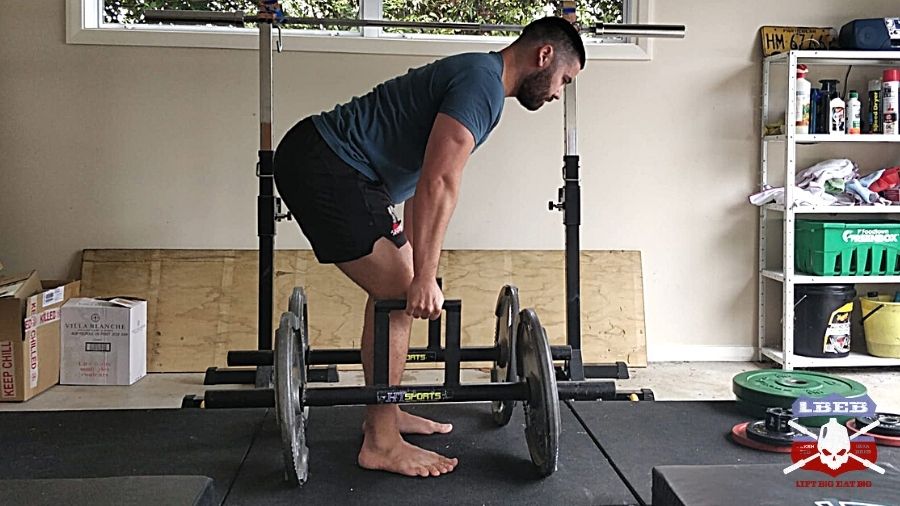
Grip your implement and setup as you would for a deadlift. Your implements will be on either side of your body.
Step 2
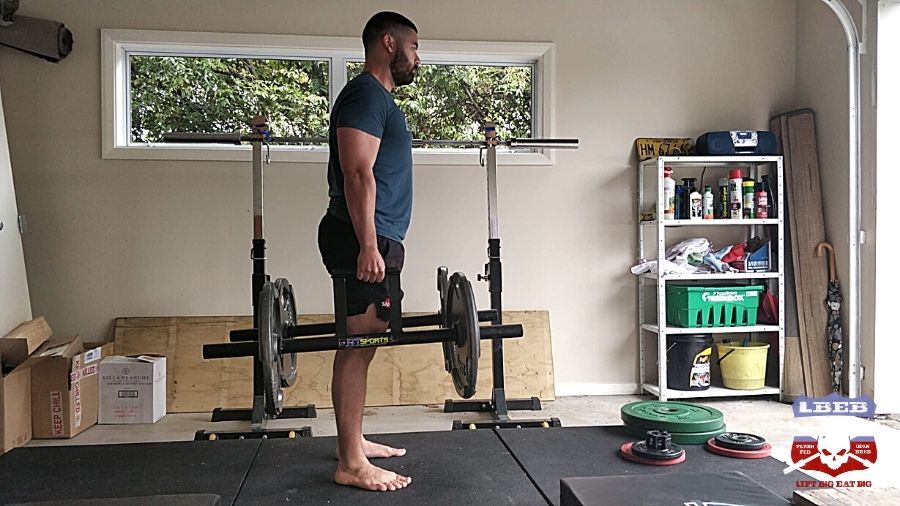
Deadlift the implements so you are standing up tall. Don’t start walking until you have stabilized the weight.
Step 3
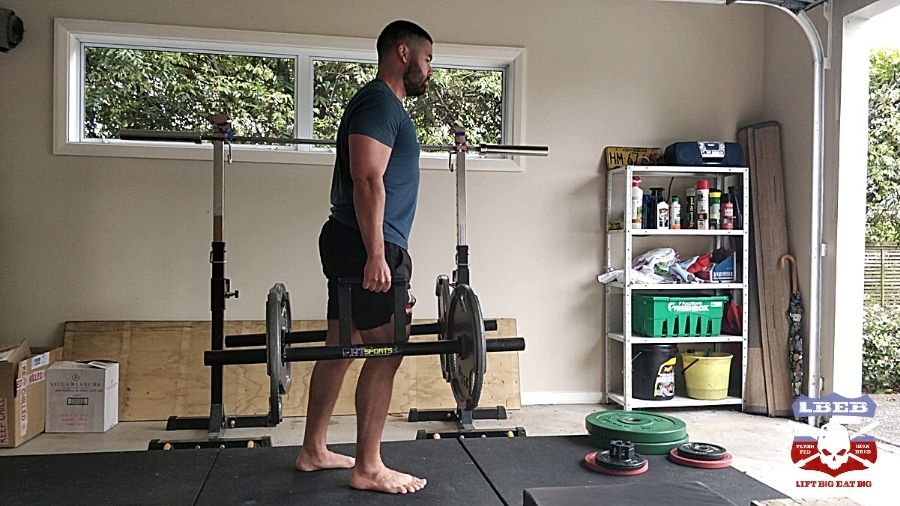
Start walking forward with small steps while maintaining your brace. Once you reach your desired distance or time, lower your implements back to the floor.
Most importantly, don’t let the load round your back. Fight against the load to maintain your upright posture.
What Muscles Does The Farmers Walk Work?
The farmers walk is a full-body exercise that targets most muscle groups.
Calves – Since the farmers walk results in greater dorsiflexion of the ankle than unloaded walking, greater stress is placed on the calves as they go through a larger range of motion [1]. Further, walking with load requires more effort at toe-off during the walking stance.
Quadriceps – Strong quads are needed to pick the implements off the floor. They aid in extending the knee when walking.
Hamstrings – Hamstrings aid in the extension of the hip when picking up the implements and walking.
Glutes – Just like the hamstrings, the glutes aid in hip extension during the deadlift portion of the farmers walk and with walking. The glute medius is activated heavily during the farmers walk especially in those with weak hip abductors (glute medius muscle) [2].
Trunk/Core – Walking events like the farmers walk display greater activation of the abdominal muscles (rectus abdominus, internal and external obliques) compared to other Strongman exercises [1].
Lower Back – The farmers walk heavily taxes the erector spinae muscles that run alongside the entire spinal column.
Upper Back – This is where the farmers walk really shines. Their ability to work the muscle of the upper back like no other exercise. Because you are holding heavy loads for relatively long periods, this increases the time under tension for the upper back muscles.
Forearms – We can’t forget the important grip. The hands and forearms are what you feel the most when doing the farmers walk and will be your limiting factor with the exercise.
Benefits Of The Farmers Walk
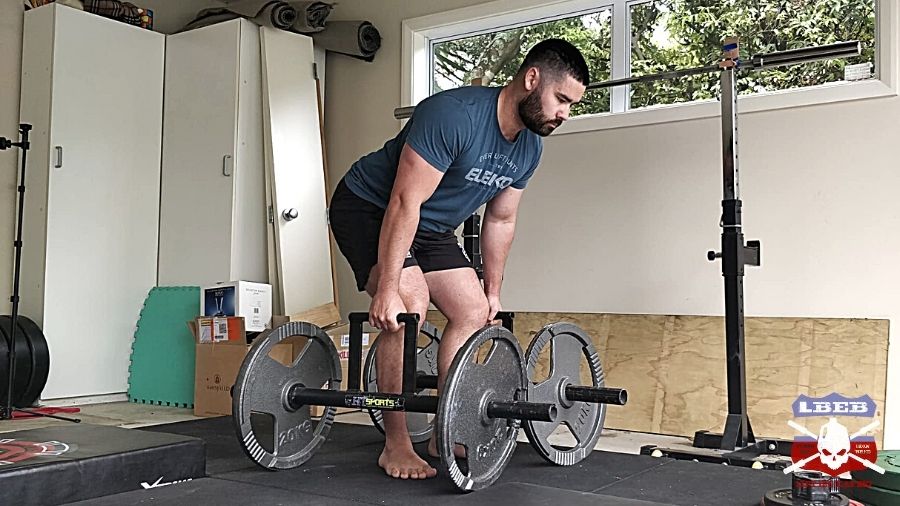
Strengthen Your Grip
The farmers walk is said to require high levels of grip strength [3]. You’ll know this from experience as your forearms ache after a set of farmers walks. The great thing is you can challenge your grip further by using Fat Gripz and creating a thicker bar. So thinner handles can be used to handle heavier loads and thicker handles can be used to challenge the grip further without taxing the body.
Pack On Muscle
Farmers walks will pack on muscle mass to give you that dense, muscular look you won’t get from pumping on machines. Thick erector spinae and large traps are the cornerstones of a physique made by carrying heavy implements. Not to mention developing thick forearms, hands, and wrists.
Burn Fat
Strongman training is often used as a conditioning modality. The farmers walk is probably the most commonly used Strongman conditioning exercise as it is the most accessible and easiest to learn. If you’ve ever carried implements in your hands (even your grocery shopping!) for long distances, you’ll know that feeling of your heart beating out of your chest.
Using the farmers walk to sustain high heart rates is a good way to burn body fat while maintaining muscle mass.
Develop Full-Body Stability
Being able to walk with heavy loads in each hand helps develop full-body dynamic stability. All of the muscles in the body must work intensively to ensure you don't drop the implements, trip over your own feet, or fall forward or to the side.
Improves Postural Strength
The ability to maintain an upright walking posture with weights pulling you down will challenge your back and trunk muscles like no other exercise. This will carry over to a stronger deadlift.
Teaches You To Brace
Bracing is a technique that allows you to handle heavy weights whether that is in your hands or on your back. The farmers walk provides immediate feedback as you have to brace to stabilize the heavy loads. There is no way you can do the farmers walk without it.
How To Farmers Walk More Weight
Having more muscle mass, more body mass, and heavier 1RMs in traditional strength lifts are obvious performance determinants of the farmers walk. What blew my mind was that flexed arm girth (the size of your arms when flexed) is also a determinant of farmers walk performance [4].
So, if you needed another excuse to train arms, there you have it.
Farmers Walk vs. Deadlift
When picking up farmers handles, the torso is more horizontal compared to the deadlift and at the top of the movement, the torso is more vertical [1]. Further, the farmers walk results in greater vertical and horizontal force production compared to the deadlift [1]. Hence, the farmers walk can potentially be a great accessory exercise for the deadlift.
Farmers Walk Workouts
The farmers walk can be used to train multiple physical qualities. The exercise isn’t just used for strength development.
Farmers Walk For Hypertrophy
In Colm Woulfe’s (World’s Strongest Man competitor) published study, he gives specific farmers walk guidelines for packing on muscle mass [3].
Sets | Reps | Rest | Load |
|---|---|---|---|
3-4 | 30-45 seconds OR 20-50 m | 90-120 seconds | 75-80% OR load the allows at least 30 sec of work before failure |
If you don’t want to use time, you can also use distance. Colm recommends 20-50 m for muscle growth.
Farmers Walk For Conditioning
Strongman exercises such as the farmers walk are some of the most difficult conditioning exercises. They spike blood lactate up to 16 nmol/L which is highly anaerobic leaving you out of breath with burning muscles [3].
You’re essentially doing high-intensity interval training with heavy weights. Colm recommends this protocol for farmers walk conditioning:
Sets | Reps | Rest | Load |
|---|---|---|---|
3-4 | 30+ seconds | 30+ seconds | 75% |
Best Farmers Walk Equipment
Strength Shop USA Farmers Handles
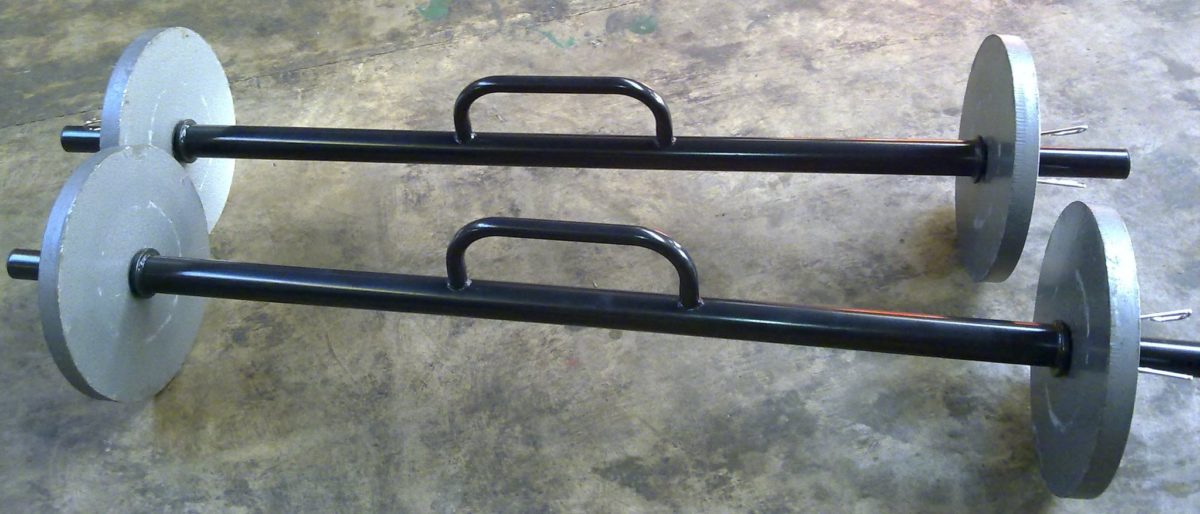
The best farmers walk equipment is the Strength Shop USA Farmers Handles. They are ready-made for this exercise and allow the greatest load to be lifted and are comfortable to walk with. The biggest problem with farmers handles is their length.
For example, the ones I'm showing in the pictures of this article are very short. They are cheap. Rogue does similar length ones like these. You will kick the plates in the front and behind and it will severely limit the loads you can walk with.
These Strength Shop USA farmers handles are long just like you need them and only cost $99 for a pair. One advantage is the handles aren’t knurled. Heavy knurling on farmers handles can be a painful experience.
If you can’t use farmers handles, you can use dumbbells or heavy kettlebells. However, dumbbells are much harder to grip as the weight is in line with the handles compared to being under the handles.
Farmers Walk Variations
I have some epic farmers walk variations for you that you have probably never heard of. I’ve used these extensively with athletes and they can be great additions to your training routine.
Stop & Go Farmers Walk
If you need to practice the ability to stop on a dime, the stop & go farmers walk is your go-to. Set up a 20 m strip with 2-3 cones randomly distributed within the 20 m and start walking with your implements.
When you reach each cone, stop as fast as you can and come to a complete standstill. Then continue to the next cone. To level this up, have a partner call when to stop so you need to react and you can't anticipate.
Zig-Zag Farmers Walk
The zig-zag farmers walk variation is great for practicing the turn and being able to accelerate and decelerate effectively. All you need to do is set cones in a zig-zag fashion over 10-20 m. Now, instead of farmers walking in a straight line, you will zig and zag around the cones.
This variation is not for the faint-hearted. This will challenge your grip and full body stability like no other exercise.
Suitcase Carry
While the suitcase carry isn’t a farmers walk, it is close enough. A suitcase carry is carrying an implement on one side only. This will challenge your obliques to a greater extent than the farmers walk as you need to resist lateral flexion.
Towel Farmers Walk
This is my all-time favorite farmers walk variation because it will tax your grip more than any other farmers walk variation. You will need to use kettlebells for this variation. Simply put a hand towel around the kettlebell handle and get walking.
When you grip the towels, your thumb should be closest to the floor. Don't use a hammer grip as this will be very uncomfortable.
Summary
The farmers walk should be in your training program regardless of your training goal as it can be tailored to any goal you have. Getting stronger, packing on size, or shredding body fat are all possible with the farmers walk and its variations.
References
1. Winwood, P. W., Cronin, J. B., Brown, S. R., & Keogh, J. W. (2014). A biomechanical analysis of the farmers walk, and comparison with the deadlift and unloaded walk. International Journal of Sports Science & Coaching, 9(5), 1127-1143.
2. Stastny, P., Lehnert, M., Zaatar, A., Svoboda, Z., Xaverova, Z., & Pietraszewski, P. (2015). The gluteus medius vs. thigh muscles strength ratio and their relation to electromyography amplitude during a farmer’s walk exercise. Journal of human kinetics, 45, 157.
3. Woulfe, C., Harris, N., Keogh, J., & Wood, M. (2014). The physiology of strongman training. Strength & Conditioning Journal, 36(6), 84-95.
4. Hindle, B. R., Lorimer, A., Winwood, P., & Keogh, J. W. (2019). The biomechanics and applications of strongman exercises: A systematic review. Sports medicine-open, 5(1), 1-19.
